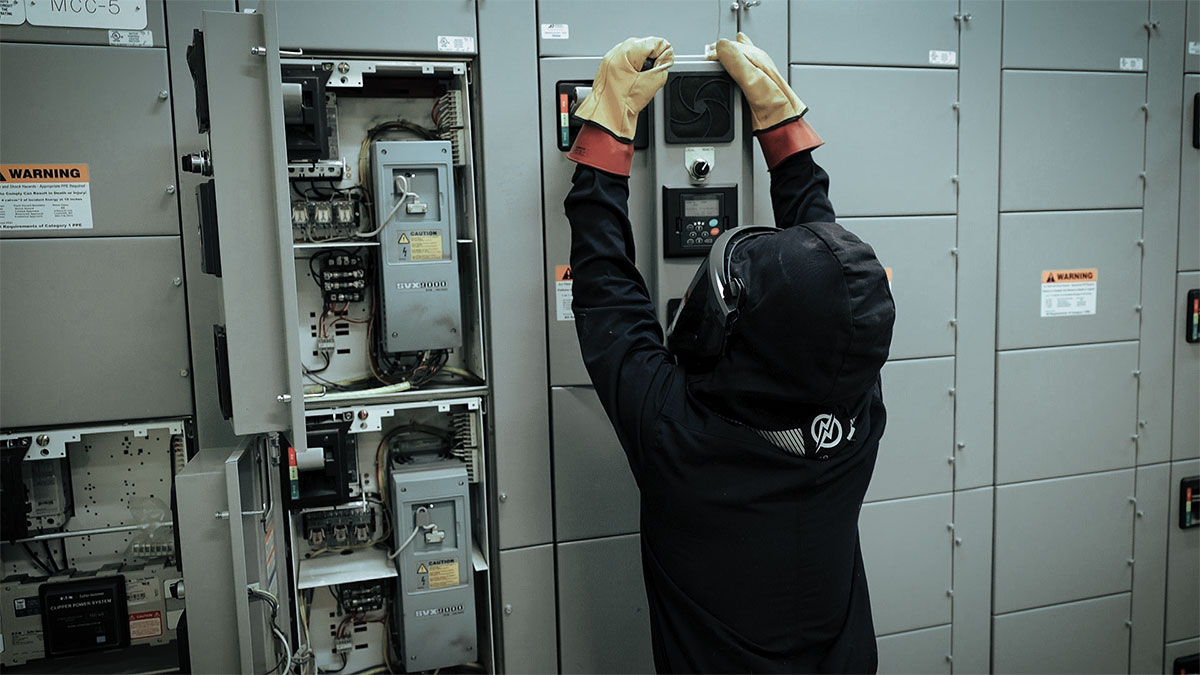The Canadian Electrical Code offers several ways to protect us from electrical shock hazards when electrical equipment may be within reach, in a wet or damp area, or near grounded metal. In some cases, we are asked to maintain “out of reach” distances. When this is impracticable, a Class A ground-fault current interrupter may help to minimize the risk of electrical shock when people find themselves in simultaneous contact with electrical equipment and the earth. A GFCI may serve as a second safety barrier, should the first barrier fail to prevent an electric shock. You will recall that a Class A GFCI will trip in the event of leakage current less than 6 mA, safely within the comfort range of most people.
One example is Rule 30-322 Lighting Equipment in Damp Locations or Near Grounded Metal. Rule 30-322(3) specifies that light switches must not be within reach of persons in showers or bathtubs. But this rule does not specify any minimum distance. To find out how “within reach” should be interpreted, we must turn to Appendix B of the code, to confirm that a minimum one metre horizontal distance is necessary. Why out of reach? As we can all appreciate, our human bodies have low resistance to electrical current flow in a wet environment such as a tub or shower. In particular, people in tubs and showers will also find themselves close to well grounded water taps, and therefore vulnerable to electrical shock.
Another Rule 26-710(g) requires us to locate receptacles in bathrooms “at least one metre, but in no case less than 500 mm” horizontal distance from a bathtub or shower. Again, receptacles must be out of reach, but strangely, Rule 26-710(g) provides us with not one, but two minimum distances. To be safe, and keep the electrical inspector happy and smiling, we should assume that the greater distance nearly always applies. The shorter distance (500 mm) should only be considered when greater clearances are clearly unworkable due to room size, layout, etc. But there’s also another layer of protection. Rule 26-700(11) further minimizes risk of electrical shock by requiring that all receptacles in bathrooms within 3 metres of washbasins, tubs and showers be protected by a Class A GFCI.
Rule 30-322 also stipulates that lighting must be controlled by means of a wall switch when located within a 2.5-metre vertical or 1.5-metre horizontal distance of laundry tubs, plumbing fixtures, steam pipes or other grounded metal. This rule offers only a single exception—fixtures approved for wet locations having a switch integral with each fixture. Here the code tries to head off shock hazards by placing lighting equipment beyond the reach of a person near grounded metal, should the metal enclosure of a lighting fixture become “live.”
Section 68 of the code also provides electrical safety requirements for people in tubs or seeking enjoyment at a swimming pool. Rule 68-302(2) specifies that hydromassage bathtub controls must be located out of reach (at least one metre from the tub). Alternatively, the controls may be behind a barrier and therefore inaccessible from the tub, or it may have built-in controls, with overall approval as a hydromassage tub component. Here the goal is identical to Rule 30-322(3), to protect people from cutting short their enjoyment, risking electrical shock while operating the controls, comfortably grounded in warm water.
Another Rule 68-068 (6) prohibits locating a GFCI within reach, at least one metre distance from a hydromassage tub. This rule helps reduce chances that a person positioned in the tub might attempt to reset the GFCI should it trip. The result could be disastrous. The code offers two exceptions to this general rule—if the GFCI happens to be a built-in component of the tub and the assembly so approved, or if the GFCI is located behind a barrier and out of reach.
Rule 68-202(1) asks us to keep swimming pool pump receptacles well away from the pool water (no closer than 1.5 metres). As a further enhancement to electrical safety, the rule also requires that all receptacles within 3 metres of a pool be protected by a Class A GFCI. This provides second safety barrier, should someone unwisely decide to plug in a radio or other electrical appliance at the water’s edge.
To further minimize risk of electrical shock while resetting, Rule 68-068 requires that a GFCI be located well away (at least 3 metres) from the water of swimming pools or hot tubs. This means that a receptacle within 3 metres of a pool must be supplied by a GFCI circuit-breaker.
As with past code articles you should always consult with the electrical inspection authority in each province or territory to obtain a more precise interpretation of any of the above.













Find Us on Socials